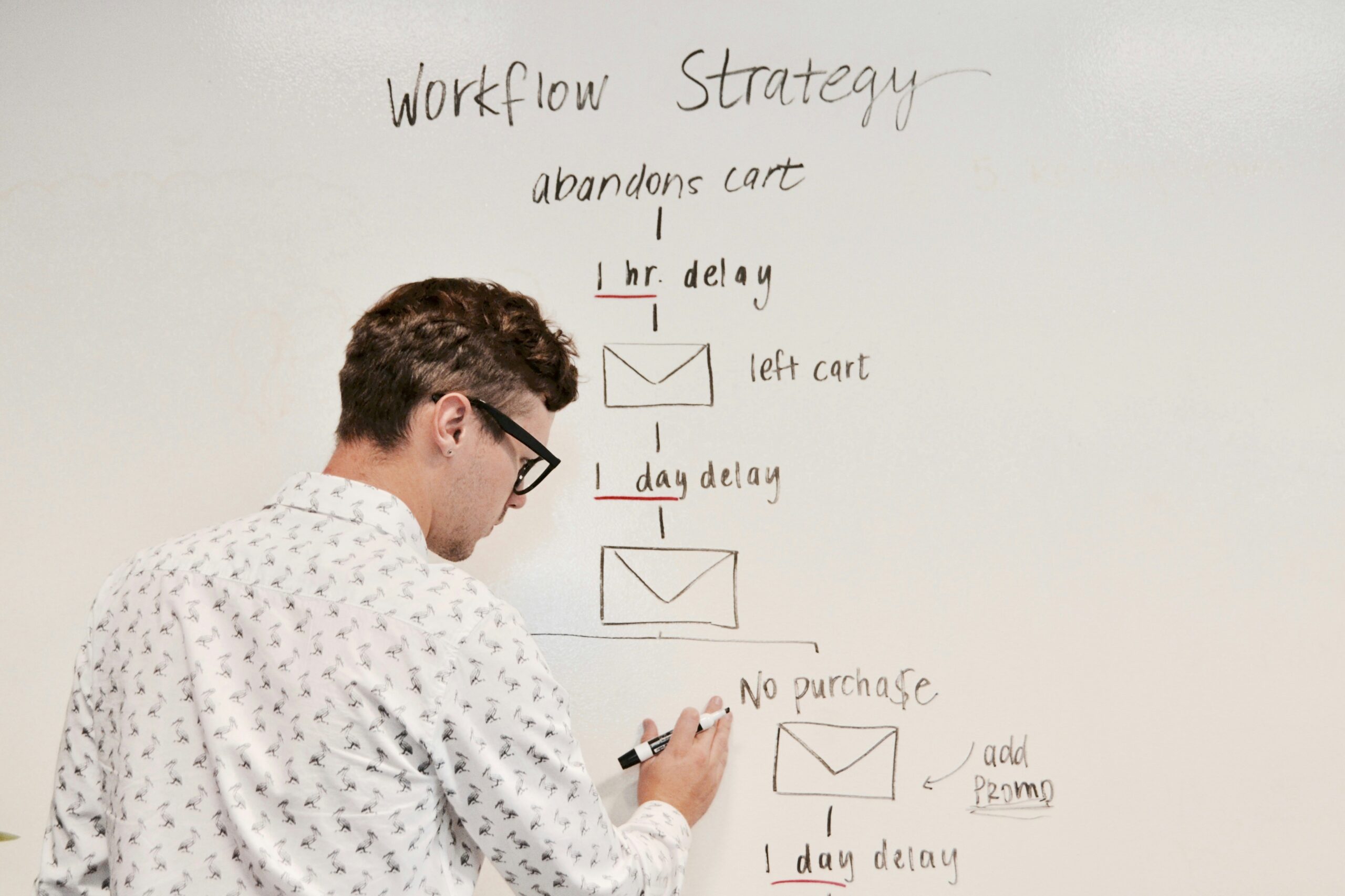Mastering email list segmentation can significantly boost engagement, yet many struggle to implement effective strategies. This article will explain email list segmentation and why it is essential for enhancing engagement, and provide actionable steps for successfully segmenting your lists. Readers will learn how to identify valuable segments and use practical tools to increase their outreach effectiveness. This content empowers readers to create targeted campaigns that resonate with their audience by addressing the common challenge of low engagement rates.
Key Takeaways
- effective email segmentation increases customer engagement through targeted messaging
- understanding audience demographics improves the relevance of email content
- using purchase history allows for tailored communication that resonates with subscribers
- monitoring engagement metrics helps refine strategies for better performance
- automation streamlines communication, boosting conversion rates and saving time
What Is Email List Segmentation?

Email list segmentation is a strategy for dividing a subscriber list into smaller groups based on specific criteria. This approach allows businesses to send targeted email campaigns, which can significantly increase customer engagement. By using relevant data points, such as purchasing behavior or location, companies can tailor their messaging to meet the needs of each segment.
Effective segmentation can enhance a brand’s loyalty program by ensuring messages resonate with different audiences. For example, sending promotions related to new products to loyal customers can drive repeat purchases. Businesses can craft targeted emails that strengthen the relationship with their audience by analyzing customer data and preferences.
Segmentation improves the overall effectiveness of email marketing and encourages subscribers to interact actively with content. When recipients receive emails that align with their interests and needs, they are likelier to open them and take action. Utilizing email addresses strategically within this framework can maximize the return on investment for email campaigns and foster long-term engagement.
Why Email List Segmentation Matters for Engagement

Email segmentation is essential for effectively engaging a target audience. By analyzing subscriber data, businesses can send tailored messages that resonate with different groups on their mailing list. This focused approach boosts open rates and encourages more clicks, increasing overall engagement.
Automation plays a crucial role in managing segmented email campaigns. Businesses can schedule messages that align with customer behaviors or preferences, ensuring timely communication. This automation saves time and increases the likelihood of conversions by reaching customers when they are most receptive to the content.
Using analytics to refine email segmentation strategies enhances future campaigns. By monitoring response rates and customer interactions, businesses can adjust their tactics to better meet the needs of their audience. This ongoing process creates a more responsive mailing list, improving engagement and customer loyalty:
- Understanding subscriber behaviors through analytics.
- Sending targeted content using email segmentation.
- Utilizing automation for timely communications.
- Refining strategies based on response rates.
How to Successfully Segment Your Email Lists

Understanding audience demographics, analyzing customer behavior patterns, and utilizing purchase history for targeted segments are vital to successfully segmenting email lists for higher engagement. Additionally, implementing engagement metrics can help reduce bounce rates and refine marketing automation efforts in retail or affiliate marketing. These strategies lay the groundwork for effective email campaigns that resonate with different customer groups.
Understand Your Audience Demographics
Understanding audience demographics is key to crafting a successful segmentation strategy within an email marketing plan. By analyzing factors such as age, gender, and location, businesses can create personalized workflows that deliver value to different subscriber groups. For example, using a platform like ActiveCampaign helps marketers tailor their messages based on demographic insights, addressing each segment’s specific needs and interests and ultimately leading to higher engagement rates.
Analyze Customer Behavior Patterns
Analyzing customer behavior patterns is vital in mastering email list segmentation for higher engagement. Businesses can look at factors such as purchase frequency and preferences to create more effective email campaigns. For instance, psychographic segmentation allows companies to tailor copywriting that appeals directly to a customer’s interests, enhancing loyalty and increasing the chances of successful engagement.
Utilize Purchase History for Targeted Segments
Utilizing purchase history is a powerful way to create targeted segments within an email list. By analyzing web analytics, businesses can identify various personas based on past buying behavior, which helps craft tailored messages that resonate with different income levels. This targeted approach improves engagement and maximizes the return on investment by ensuring subscribers receive content relevant to their interests and needs.
Implement Engagement Metrics for Effective Segmentation
Implementing engagement metrics is crucial for an effective email segmentation strategy. By tracking open rates, click-through rates, and overall interaction levels, businesses can gain insights into what captures their audience’s attention on their email marketing list. This data allows marketers to adjust their content and messaging based on actual performance, ultimately leading to a more engaged and responsive subscriber base.
Different Types of Email List Segments

Segmenting email lists is an effective way to enhance lead generation and customer retention. Businesses can create targeted groups based on industry or job function, geographic location, and behavioral data. This approach ensures relevance in email marketing campaigns, allowing for tailored messaging that drives engagement and encourages subscribers’ strong call to action.
Segmenting by Industry or Job Function
Segmenting email lists by industry or job function is an effective parameter that can significantly improve engagement in email marketing. By understanding the unique needs of different industries, businesses can design targeted campaigns that resonate with specific job roles. For instance, a tech company might use email marketing tools like Campaign Monitor to create lead magnets tailored for software developers and IT managers, ensuring the content is relevant and useful to each group. This focused approach leads to higher open rates and conversions, making email campaigns more successful.
Creating Groups Based on Geographic Location
Creating groups based on geographic location is a smart approach to improve email content relevance. By analyzing location data, businesses can tailor campaigns to address local events, regional sales, or seasonal trends that affect customer behavior. This method also alleviates the pain of irrelevant messaging, ensuring subscribers receive information that resonates with their unique context.
| Location | Common Pain Points | Tailored Email Content Ideas |
|---|---|---|
| Urban Areas | High competition and busy lifestyles | Promotions for quick delivery options |
| Rural Areas | Limited access to certain products | Highlighting exclusive local offers |
| Seasonal Regions | Weather-related product needs | Special campaigns for winter gear or summer activities |
Using Behavioral Data for Tailored Messaging
Using behavioral data for tailored messaging can significantly boost engagement. By analyzing past actions, businesses can identify patterns such as purchase history, frequency of visits, or coupon usage. This allows for personalized offers that resonate with specific functions and preferences, including factors like gender, ultimately increasing revenue by ensuring that content is relevant and appealing to different segments.
Tools and Resources for Effective Email Segmentation

Utilizing popular email segmentation software can significantly influence open rates and overall email engagement. This section offers insights on effectively integrating segmentation tools within email strategies. It also explores how understanding customer lifestyles can enhance targeting, ultimately improving customer lifetime value through well-crafted email segmentation strategies.
Overview of Popular Email Segmentation Software
Popular email segmentation software can significantly enhance the effectiveness of email marketing campaigns. Tools like ActiveCampaign and Mailchimp allow businesses to segment their lists based on various criteria, such as psychographics and purchase frequency, making sending tailored messages that meet customer needs easier. Additionally, these platforms help reduce the chances of emails being marked as spam by ensuring the content is relevant and engaging based on the user’s behavior, including items left in the cart.
Tips for Integrating Segmentation Tools With Your Strategy
Integrating segmentation tools effectively requires ongoing research to understand how different audience segments respond to various messages. Businesses should monitor results closely and adapt their email lists based on real-time feedback to enhance lead generation efforts. Ensuring strong customer service during this process can also help address any subscriber issues, foster a better relationship with the audience, and boost engagement rates.
Best Practices for Email List Segmentation

Maintaining data accuracy and relevance is key to effective email list segmentation. Regularly reviewing and adjusting segments ensures that communications remain aligned with customer needs. Testing and analyzing segment performance helps refine strategies for content marketing efforts, optimizing landing pages for increased engagement. These practices enhance the quality of communication and drive better results from email marketing campaigns.
Maintaining Data Accuracy and Relevance
Maintaining data accuracy and relevance is essential for effective email marketing segmentation. Regularly updating customer data ensures businesses can tailor their campaigns based on current preferences and behaviors. For example, integrating information from social media platforms can provide insights into customer interests, allowing marketers to improve their targeting strategies and enhance engagement rates.
| Practice | Description | Benefit |
|---|---|---|
| Regular Updates | Consistently refresh customer data and preferences. | Ensures accurate targeting for campaigns. |
| Social Media Integration | Use data from social media to learn about customer interests. | Improves personalization and relevance in messaging. |
| Data Validation | Check and correct inaccuracies in customer information. | Increases trust and engagement with subscribers. |
Regularly Reviewing and Adjusting Segments
Regularly reviewing and adjusting email segments is vital for maintaining a brand’s reputation and ensuring ongoing engagement. As customer behaviors and preferences change, businesses must adapt their strategies accordingly to foster growth hacking opportunities. By analyzing engagement metrics and subscriber feedback, companies can refine their segments, ensuring their messaging remains relevant and personalized for each group, ultimately driving higher interaction and loyalty.
Testing and Analyzing Segment Performance
Testing and analyzing segment performance is crucial for mastering email list segmentation. By monitoring key metrics like open rates and click-through rates, businesses can identify which segments respond better to specific messages. This data allows marketers to fine-tune their strategies, ensuring that future email campaigns resonate with the right audience and lead to increased engagement and conversions.
Conclusion
Mastering email list segmentation is crucial for enhancing engagement and improving marketing effectiveness. Businesses can deliver relevant content that resonates with their audience by tailoring messages based on demographics, behaviors, and preferences. Regularly reviewing and refining segmentation strategies maximizes interaction rates and fosters customer loyalty. Implementing these practices allows companies to transform their email campaigns, driving meaningful connections and achieving better results.







